Frösön (Frøy’s island) in Storsjön (The big sea) was the center of Jämtland for about 1,000 years, from the 8th century to 1879. It was here people met in ancient times for trading and to join the Norse cult. The Jämtland’s parliament, Jamtamót, was held at Byneset, on the east side of Frösö. It is unique in the Nordic countries to call the parliament ‘Mót’ instead of ‘Thing’. The word mót comes from Gothic, and is also used in Great Britain (eg Witenagemot). In Christian times, Jamtamót was held the week after the Gregorian Mass (March 12th). It had both judicial, legislative and administrative functions. The old tradition of a winter market has been taken up again since 1986, under the name Gregoriemarknaden.
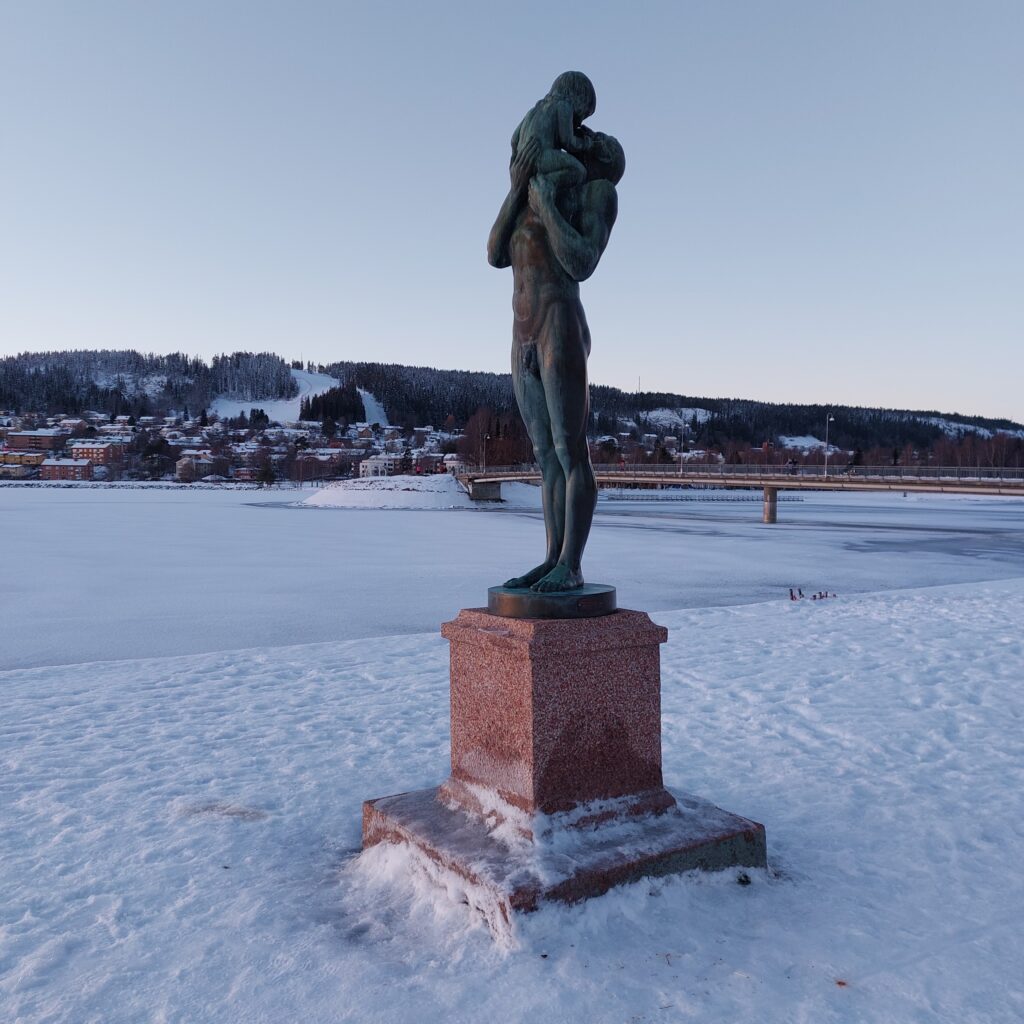
From Frösön, Åsbjørn Gudfastsson built a bridge over to the mainland (current Östersund city) around the year 1050. This happened in connection with the Christianization of Jämtland. The events were marked with the carving of a rune stone, the so-called Frösöstenen.
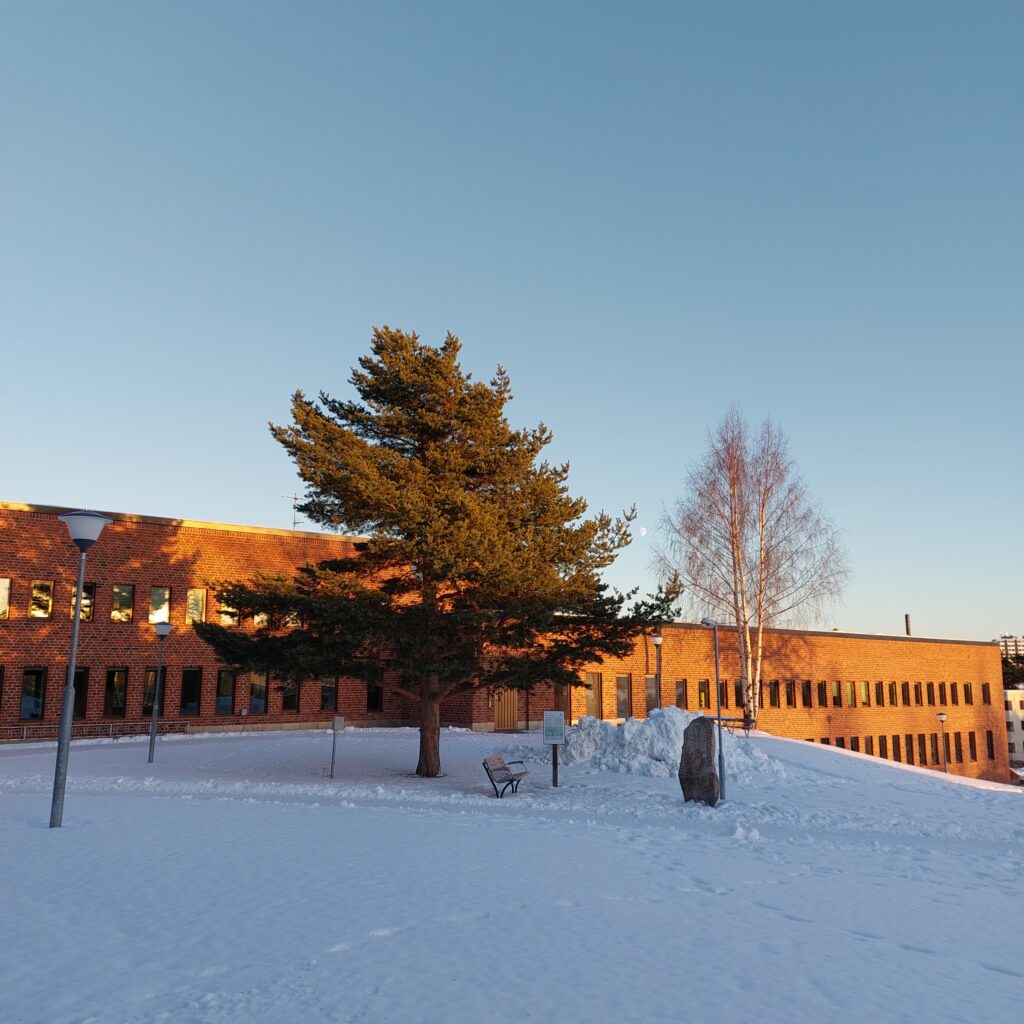
A large cross and a snake-like ribbon (Midgardsormen? Storsjödjuret?) are engraved on the stone. This was a turning point, at the transition between paganism and Christianity. The text in English is this:
Östman, Gudfast’s son, had this stone raised and this bridge built, and he had Jämtland Christianized. Åsbjörn made the bridge. Tryn and Sten carved these runes.
The Frösö stone is Sweden’s northernmost rune stone, and the only one that mentions the Christianization of an entire region – Jämtland. This is the first time Jämtland is mentioned in writing as a specific area. The Frösö stone has never been a tombstone. The stone has been moved 100 meters from its original location to make space for today’s road with the Frösö bridge over to Östersund.
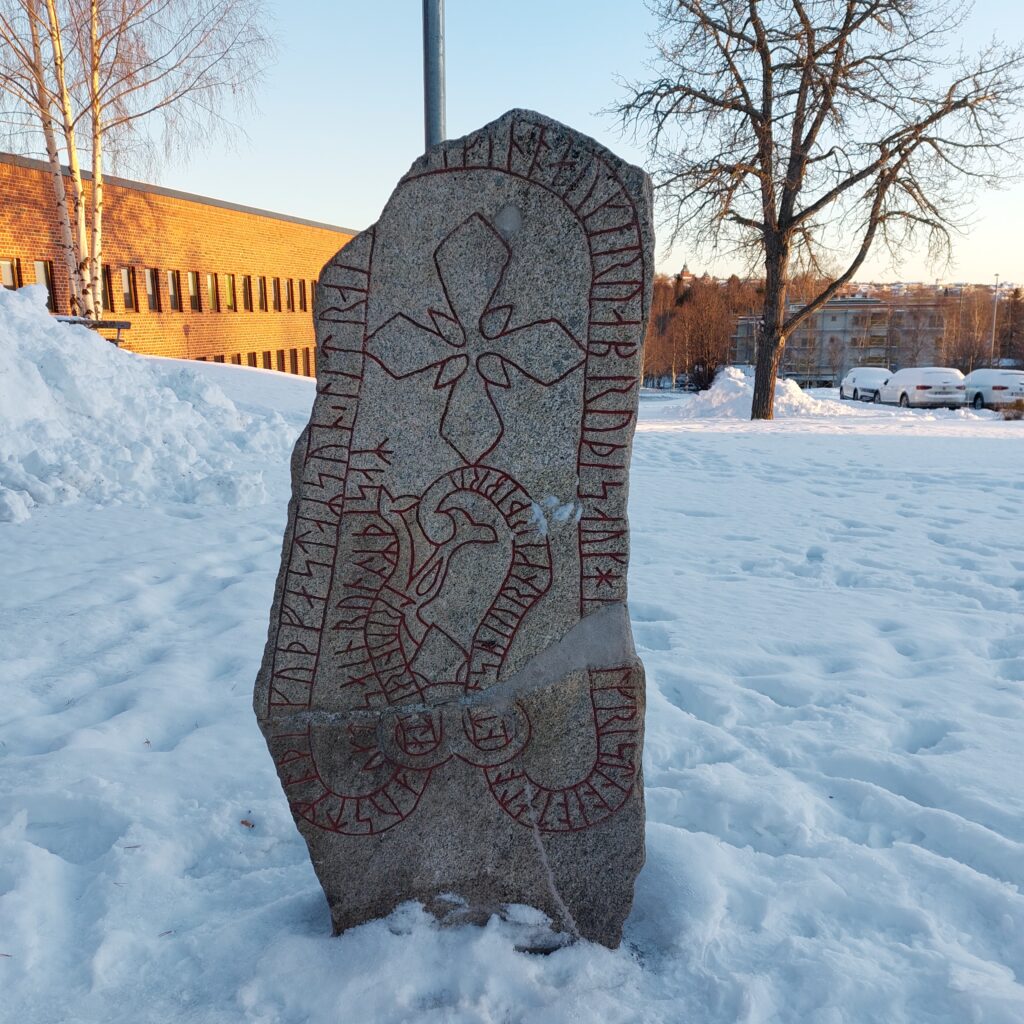
South-west of Frösö bridge you can find Surfbukta (the Surf Bay). Here you can take a winter bath! Today’s tip: Join the FB group ‘Vinterbad Östersund’, to arrange swimming together with others. NB: Do not bathe alone! We in Tobatheornottobathe are already 2 people, so all we needed was the tip where to find the hole in the ice. And we got what we needed.
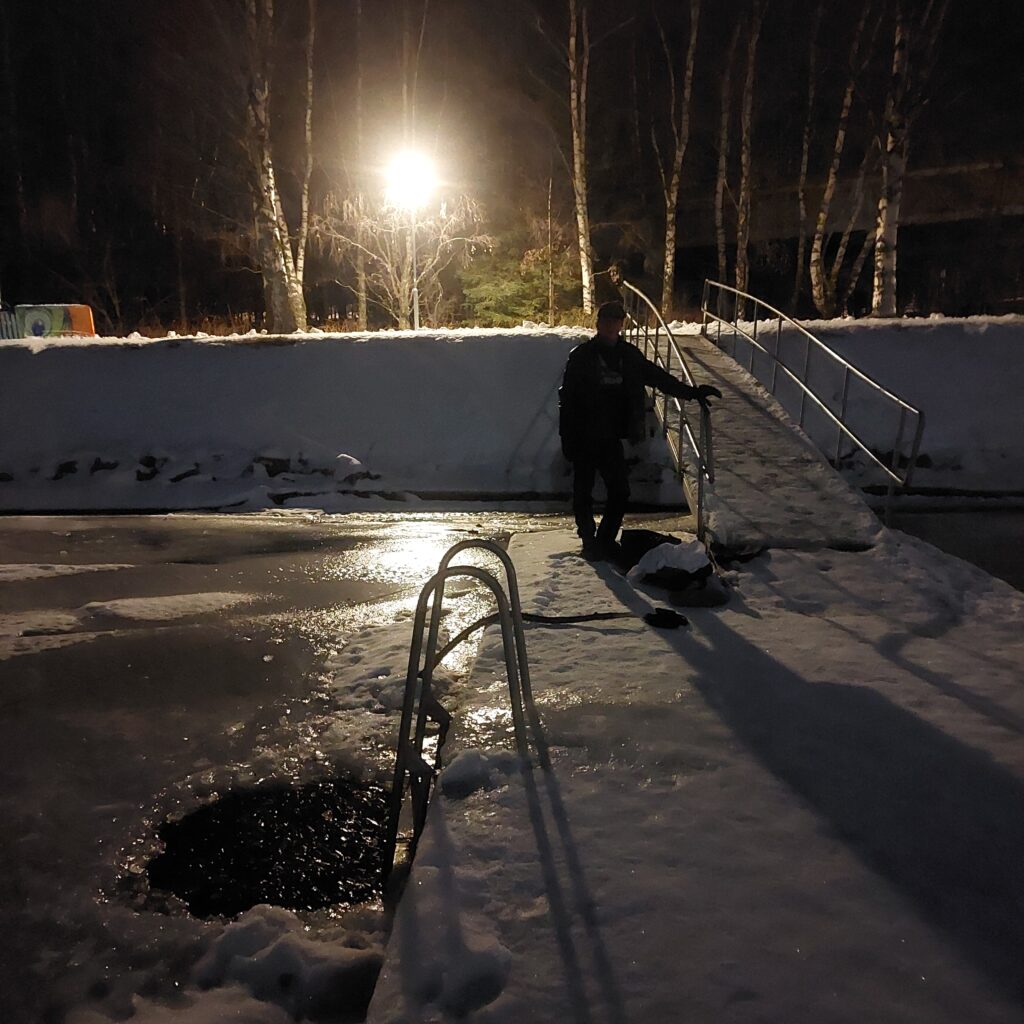
The first day of the year 2023 was quite cold (-10 degrees Celcius), but we had woolen clothes and swimwear ready, so this would be very easy, we thought. Only to discover that Knut’s wool trousers were in the hotel room, and Idun’s wool socks in the car. And none of us did bring wet gloves or extra mittens for the bath. It got cold! But great! And a little scary to go up again, since we could feel that more than a few seconds grip with wet hands on the metal rails and the hands would have been stuck there until spring!
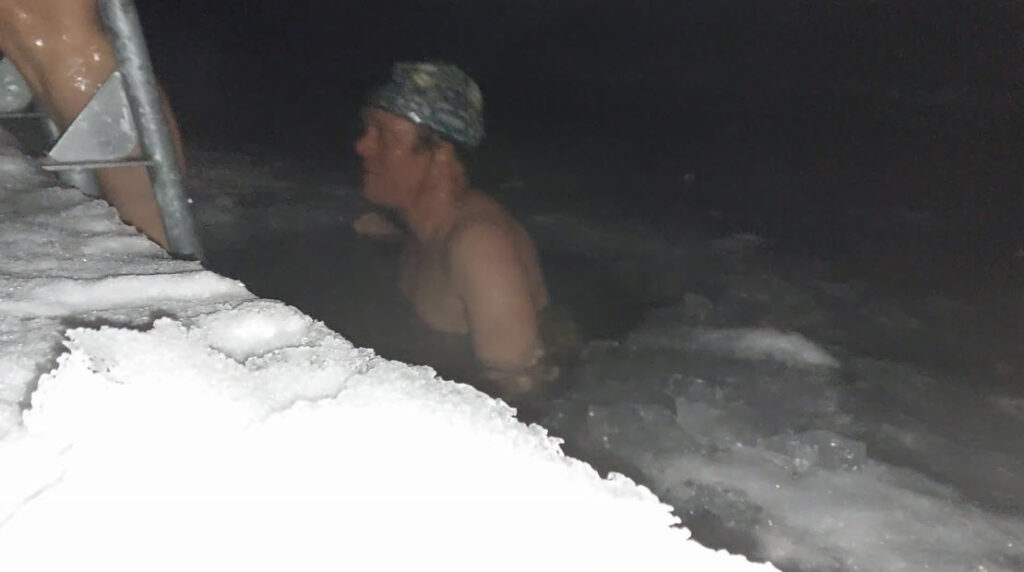
Anyway – a New Years’ bath at Frösö was just right!